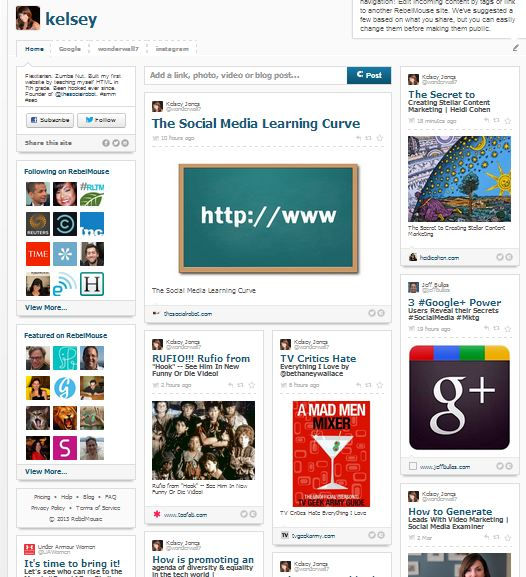Is Social Content Curation The Next “Better” Thing?
- Fahad H

- Mar 11, 2013
- 3 min read
Social content curation has blown up in the past year, after
a late start that began to show traction around 2007-2008. Pinterest continues to experience massive growth, with Wanelo nipping at its heels.
Social media users have gotten smarter when it comes to sharing; many are no longer posting Facebook statuses about what they ate and are instead using social networks to share their passions, ideas, and content they love.
Social Media Content Value For Brands
The value of content for brands has been slow and time-coming, but businesses are beginning to realize it’s not the fact that you are on social media that counts; it’s what you are publishing. The old-time image of a CEO coming out of his office and proclaiming, “Well, we better get on Twitter,” is transforming into “We now have hundreds of thousands of followers, let’s start showing them some great content.”
Social networks like Pinterest have made it relatively easy to share content in an attractive way through images.
Because technology is making it possible to access the entire Internet anywhere a person goes, thanks to rampant wifi and cell-tower access, users are actually getting better at and more accustomed to consuming a large amount of content on a consistent basis. Most people are no longer interested in just following their high school classmates on Twitter or Facebook. They now want to know what value there is in what they have to say.
It was nice to be able to know that your former 8th grade best friend just had her second child, but reading about 500 different former friends in your newsfeed is overwhelming. So, people are searching for something different. Hence, custom curated content targeted toward specific individuals and their interests has gained a lot of traction.
Content Curation Platforms
The folks over at Medium (who formally were involved with Blogger and Twitter) have the right idea. They wanted to leverage great content on a central platform that could get more exposure than blogs that aren’t as popular. Great content can exist in all corners of the Internet, and bringing it to the foreground via content-sharing and curation platforms makes it easier to find.
Content aggregators continue to help users “cut through the noise on social media,” as Storify and Scoop.it promise. They allow users to share their passions through filtering the best content about a certain topic. Users can choose to “scoop” the content Scoop.it has chosen, or s/he can scoop pages they’ve come across browsing along. Scoop.it is the evolution of sites like HubPages and Squidoo, as it doesn’t rely on users to generate their own content. Instead, it pulls great content that has already been created into a single space. Paper.li is also a good example of this.
However, collective platforms aren’t the only thing gaining popularity. Aggregated individual profiles, such as RebelMouse and Vizify, allow users to automatically aggregate their shared content across several online platforms into one page.

Graphic and visual layout of aggregated content is what is gaining the most traction in the online content space today.
Users want something that is easy to navigate, yet visually appealing enough to keep their interest. Because technology is always at their fingertips, making things as easy as possible (hence the automatic aggregation from the many of sites mentioned) is what readers are wanting.
Copyright Concerns
Pinterest came under fire last year for allowing copyrighted content to be pinned by users. Thus, came a new effort to make sure that content was attributed to its rightful creator. However, as long as individuals and businesses are getting the correct attribution, they should be excited about getting their content curated and should do everything they can to promote it.
Overall, curation leads to greater exposure, which can only lead to good things for the website, blog, company or individual it leads back to. When curating content, all efforts should be made to find the original poster or owner. Additionally, there is a greater possibility of this when the creators themselves are part of the curation community, sharing their own content as well as others’.
Participating in content curation can be fairly easy, if using one of the sites mentioned, especially when it comes to pulling content based on keywords or other social media profiles. However, this type of content curation is useless if online users aren’t contributing their own content once in a while. Well-written content will continue to thrive online as users become more accustomed to finding the best content they can, as easily as possible.
photo credit: Rosaura Ochoa via photopin cc








Comments